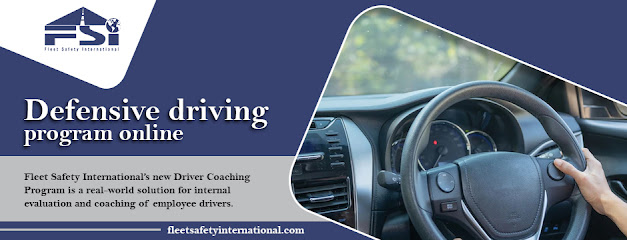The antilock braking system, stability control, and rear-view cameras that come standard on many new cars are not your car's top safety features.
Over 90% of vehicle collisions are caused by variables related to human
performance and conduct, according to the National Highway Traffic Safety
Administration. This implies that even if an automobile has the latest safety
features, you still risk injury or death if you don't drive safely.
A driving refresher course is one remedy. Driving schools around the nation
that are more renowned for training police officers, truck drivers, or
teenagers also provide courses for regular vehicle owners wishing to advance
their abilities. When getting admission to a driver safety program,
some factors are very necessary. You should follow them!
Make good habits and break bad ones
Adult learners
taking advanced driving courses learn to focus on small details they may have
overlooked after years of driving. Relearning how to grasp the steering wheel
to improve vehicle control also falls under this category. However, it also
entails doing something as seemingly straightforward as looking for potential
risks on the road.
Training programs
also put drivers in the driver's seat in situations they wouldn't normally
experience, such as steering out of a skid on dry or wet pavement. In the
programs, instructors sit in the passenger seat and provide guidance and
support while participants repeatedly practice moves until they can do so
without losing control of their emotions.
Drivers can also get familiar with car features, such as antilock brake systems
(ABS), that they may not have had cause to use previously so that when and if
they are used in an emergency, they will know what is occurring and how to
respond.
What Should You Know Before You Go?
Year-round,
advanced driver education courses are provided, primarily on weekends (although
some weekday classes are available, too). Classes vary from a half day to two
full days or more, with some classroom teaching and most of the training in the
driver's seat, managed with a defensive driving program online.
Steering Wheel
Grip: Even though it's a
big no-no, driving with one hand on the wheel may make you feel safe. Because
this is one of your primary points of contact with the car—the sensory port
through which you can determine whether the tires are maintaining a firm hold
on the pavement or are beginning to lose it—you need a perfect two-handed
grip.
Students learning advanced skills are instructed to grasp the steering wheel with their hands at the nine and three o'clock positions. Instead of the hand-over-hand technique that many individuals taught in driver's education, they emphasize using a sliding, hand-to-hand shuffle because it prevents harm if an airbag deploys after a collision.
Seat Position: Mary Lou Retton, a former American Olympic gymnast, was told by her husband that she was a bad driver before she competed in a Long Beach Grand Prix. It turns out, adds McKeever, a former racecar driver and proprietor of Fast Lane Driving School, that the 4-foot-9 Retton was just too tiny for a typical seat and conventional accelerator and brake pedals.
Braking: Even though most
contemporary cars feature ABS, most drivers have never felt what antilock
braking is like in practice. Driving instructors claim that when the system
does activate and the driver hears and feels the brakes' recognizable quick
pulsing via the brake pedal, they are certain that something is wrong and
panic. The BMW Performance Driving School urges pupils to accelerate swiftly
down a race track straightaway and then brake unexpectedly. At this moment, the
ABS will trigger to combat this fear of the unknown. The driver safety program
can manage the issues related to the programs.
Bottom Line
To arrange the drivers training program, it is always important to work on the analysis with the
terms. It is also important to deal with the functionalities based on the
driver’s training.
For more
information, visit Fleet Safety International!









0 Comments